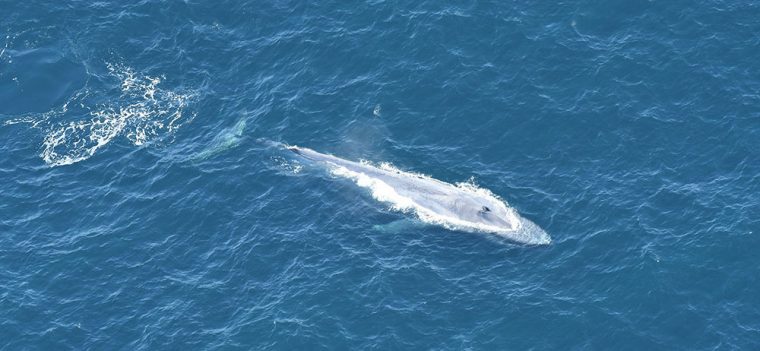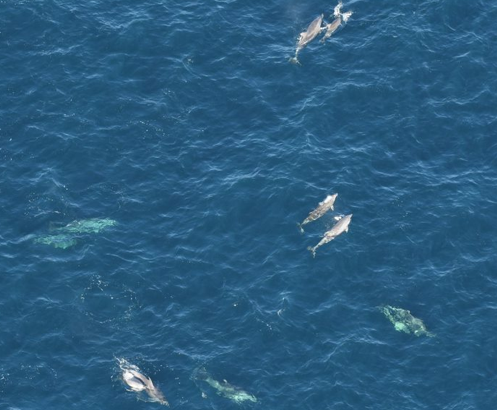Winter aerial survey captures breathtaking photos of 322 whales and dolphins

Here is a link to the photos and images from the survey. (Please credit NEW ENGLAND AQUARIUM) : https://neaq-my.sharepoint.com/:f:/g/personal/oobrien_neaq_org/EobY7qGSUNxDoydEngjJaNABL7cCFlFDl8AaTHwwLwtW1Q?e=pkDLMU
The Aquarium’s survey aerial team has flown this area for three years, but this survey was the first one conducted in winter months, so they did not know what they would discover. In the first few minutes, researchers Orla O’Brien and Amy Warren spotted a group of 50 bottlenose dolphins and then the first of two blue whales. Blue whales can grow to 100 feet long and weigh up to 140 tons. This whale was spotted directly over the monument’s Oceanographer Canyon, a 4,000-foot canyon, the deepest in the underwater national park. While blue whales are known to frequent areas where deep canyons intersect with continental shelf edges, this sighting was important because the blue whale population in the Northwest Atlantic is thought to be only around 250 animals.
The Northeast Canyons and Seamounts Marine National Monument is a hotspot of biodiversity on the edge of the continental shelf where the shallow seas off New England drop sharply into the deep waters of the northwestern Atlantic. In 2016, President Obama designated three underwater canyons, one as deep as the Grand Canyon, and four seamounts as tall as the Rockies, as the first, and only, American Marine National Monument in Atlantic waters. Early in the Trump Administration, the Department of the Interior initiated a review of the Marine National Monument and recommended that the highly protected status of the monument be diminished by allowing commercial fishing within its boundaries. Additionally, fishing groups sued to end the designation, but the US Court of Appeals for the D.C. Circuit dismissed the case last December, upholding the national monument’s status.
The New England Aquarium and Mystic Aquarium played a crucial role in the designation of the monument, which is nearly 5,000 square miles and contains many rich ecosystems. The aquariums provided strong scientific evidence about this diverse habitat in cold, nutrient-rich waters that supports deep-sea corals and offers food and shelter to sea birds and endangered and threatened sea turtles and whales. Ongoing aerial surveys are important for continuing to gather data on the monument’s environmental significance. Currently only 3 percent of U.S. waters are fully protected. In order to ensure ongoing sustainability of our oceans, there is a growing movement among scientists and global leaders calling to protect 30 percent of the land and the sea by 2030.
“The marine monument is such an important area,” said O’Brien. “It plays a critical role in the life history of so many species of whales and dolphins that come here with their calves to find food. As marine mammal researchers, it’s such a thrill to fly in this area and see such a great diversity of animals.”
During the flight, the team also saw groups of striped dolphins with calves and sperm whales that can dive underwater for as long as 45 minutes.

MEDIA CONTACTS:
Pam Bechtold Snyder, psnyder@neaq.org; 617-973-5213
Diana Brown McCloy, diana@teakmedia.com, 978-697-9414
